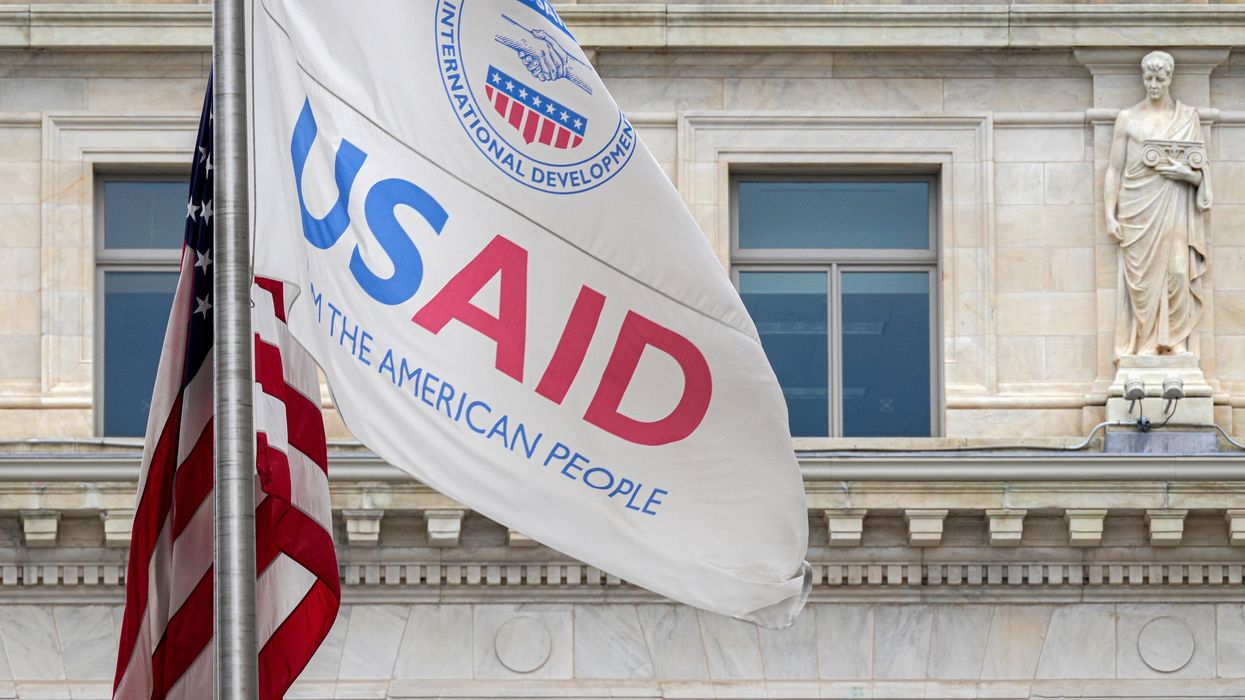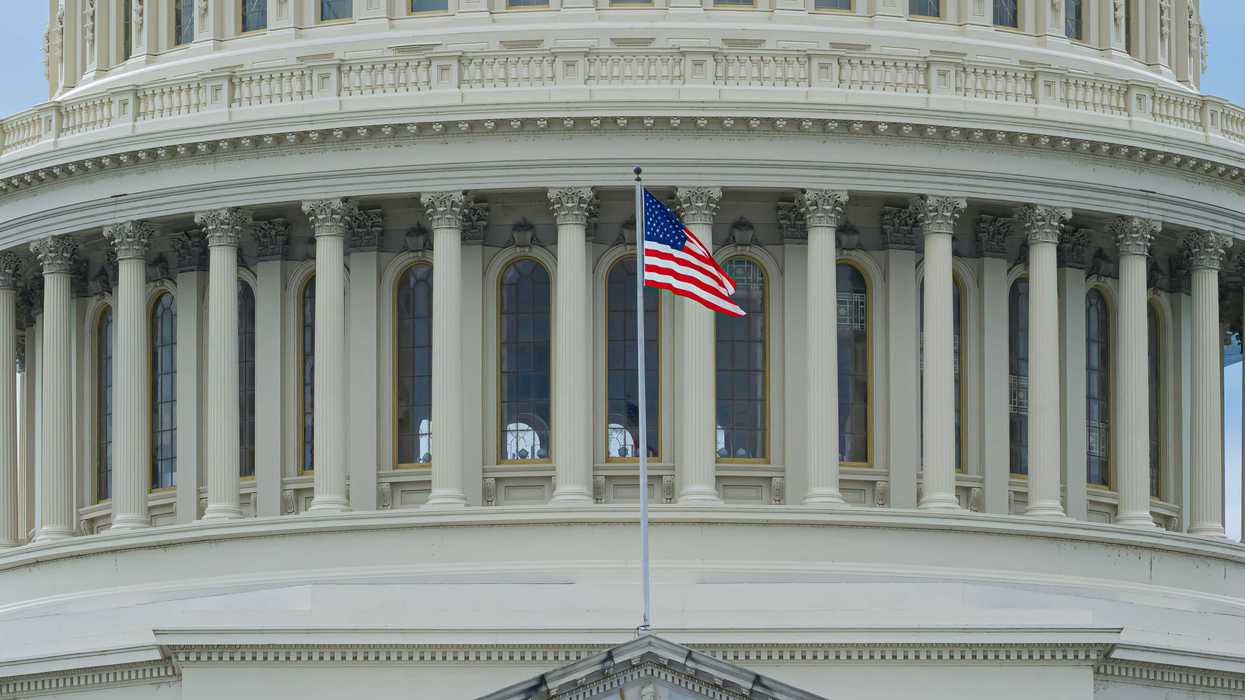Breslin is the Joseph C. Palamountain Jr. Chair of Political Science at Skidmore College and author of “ A Constitution for the Living: Imagining How Five Generations of Americans Would Rewrite the Nation’s Fundamental Law.”
This is part of a series offering a nonpartisan counter to Project 2025, a conservative guideline to reforming government and policymaking during the first 180 days of a second Trump administration. The Fulcrum's cross partisan analysis of Project 2025 relies on unbiased critical thinking, reexamines outdated assumptions, and uses reason, scientific evidence, and data in analyzing and critiquing Project 2025.
South African divestment is the most famous, and likely most successful, global pressure campaign in recent memory. The enemy was the minority white elites who conceived, implemented and perpetuated apartheid, the incomprehensibly malevolent scheme of legally sanctioned racial separation. These racists got their just desserts when company after company, government after government, and individual after individual pulled their resources. Eventually, the South African economy strained, leaders were toppled and the country began its long march toward moral reclamation.
Except for one problem: Black South Africans, the very souls who were supposedly rescued by the international effort, also suffered. When industries fell, Blacks people were the first to lose their jobs. When the economy teetered, money for education, health care, public services and the like diminished. Even today, almost 40 years after Little Steven refused to play Sun City ” Black South Africans are still trying to catch up.
Many of my generation, me included, participated in the boycotts. I would do so again; apartheid was that deplorable. But now I go into any international development conversation with my eyes wide open. And that is what troubles me about Max Primorac’s discussion of international development assistance in “Mandate for Leadership: The Conservative Promise” (aka Project 2025, the Heritage Foundation’s blueprint for a second Trump administration). His conservative ideas, if realized, will cost local jobs, much-needed public services and, yes, even real lives.
There are two basic problems with Project 2025’s plan for future foreign aid:
- It will result in a significant decrease in assistance to global south countries (especially if the spigot is turned down overnight), will have a devastating impact on the fragile economies of these regions, peoples’ overall health and well-being, and, in the most resource-scarce parts of the world, the very lives of the vulnerable.
- The qualification that aid is contingent on some sort of commitment to American conservative values — anti-abortion, a single conception of family, Christian-based religiosity, rejection of gender identity and so on — will have precisely the opposite effect from what Primorac and his Republican colleagues intend.
Let’s consider each in turn.
First, Project 2025 aims to reduce America’s investment abroad. Primorac refers to it as “streamlining” but it basically amounts to a neo-isolationist approach designed to whittle down budget of the U.S. Agency for International Development. “The next conservative Administration,” he writes, “should scale back USAID’s global footprint by, at a minimum, returning to the agency’s 2019 pre-COVID budget level.”
There is so much waste out there, Primorac says, that a Trump administration can refund billions of dollars to the American taxpayer just by holding non-governmental organizations accountable. The Trump administration can further reduce the USAID budget, Primorac continues, by making conservative cultural values a condition for sponsorship. The implication is that not all assistance programs will abide by right wing musts, and thus dollars will stay home.
That’s reasonable … in theory. Sure, we can all agree that reducing waste and stamping out corruption are good things. But understanding where the waste resides and the corruption plagues are not always apparent, and, in the meantime, the heavy burden of diminished aid rests squarely on local personnel whose employment options are already limited.
Don’t misunderstand me: I am not advocating for continued waste and corruption. What I am advocating for is the local nurse in Burkina Faso whose job it is to administer vaccines as part of the Gavi program, or the Turkmen engineer who is a critical partner in USAID’s Regional Water and Vulnerable Environment Project, or the thousands of native aid workers in the roughly 75 humanitarian emergency areas USAID supports each year. These people inevitably become the casualties of a decreased foreign aid budget. They just do.
Trouble also brews when the U.S. government puts too many conditions on foreign assistance. Primorac talks of the need to “deradicalize” USAID’s programs and structures, by which he means eliminate the Biden era measures intended to expand reproductive rights and improve women’s health, combat climate change, acknowledge different identities and foster democracy.
Ironically, though, the author insists on replacing the radical liberal agenda with an equally sweeping conservative one. Primorac encourages a future Trump administration to withhold aid to any government or non-government actor who “promotes abortion, climate extremism, gender radicalism, and interventions against perceived systemic racism.” Gone then are all DEI initiatives, conceptions of family other the traditional nuclear one, support for religions that snub the New Testament, prescriptions for a healthier planet and, yes, even possibly life-saving vaccines (against measles, TB, meningitis, yellow fever, COVID-19, HIV, diphtheria, hepatitis, etc.). Vaccines, after all, are a favorite conservative scapegoat.
Enter China. Primorac is adamant that “countering China’s development challenge” is a top Trump priority. China has spent tens of billions of dollars on global south development projects in the last five years alone. They won’t stop. In fact, the People’s Republic will likely invest more heavily in Latin America, Africa and Asia over the next decade. Which leads us to ask: Which government does Primorac think will step in when the United States refuses to sponsor green energy initiatives on these continents? Which regime will pounce in Muslim-majority regions when America launches its conservative crusade? Which global power does he imagine will fill the void when the significantly reduced USAID budget forces program closures? I think the answer is pretty obvious.
In the end, a segment of the American population on both the left and the right regularly complains that we can’t do everything around the world, that our resources are finite and our altruism underappreciated. True. But the answer is not to retreat; it’s not to hibernate. Primorac is correct: We should remain vigilant and ruthless about waste and corruption. But we should also maintain and even slightly increase current funding levels. And we should certainly sheath righteous moralism. Indeed, in moments like these it helps to recall the plight of our Black South African brethren.
More articles about Project 2025
- A cross-partisan approach
- An Introduction
- Rumors of Project 2025’s Demise are Greatly Exaggerated
- Department of Education
- Managing the bureaucracy
- Department of Defense
- Department of Energy
- The Environmental Protection Agency
- Education Savings Accounts
- Department of Veterans Affairs
- The Department of Homeland Security
- U.S. Agency for International Development
- Affirmative action
- A federal Parents' Bill of Rights
- Department of Labor
- Intelligence community
- Department of State
- Department of the Interior
- Federal Communications Commission
- A perspective from Europe
- Department of Health and Human Services
- Voting Rights Act
- Another look at the Federal Communications Commission




















 On Jan. 6, 2021, a political rally turned into an insurrection as
On Jan. 6, 2021, a political rally turned into an insurrection as  Michelle Witthoeft, Ashli Babbitt’s mother, participates in a demonstration in support of insurrectionists who were arrested and charged following the January 6, 2021 attack on the U.S. Capitol. (Tasos Katopodis/Getty Images)
Michelle Witthoeft, Ashli Babbitt’s mother, participates in a demonstration in support of insurrectionists who were arrested and charged following the January 6, 2021 attack on the U.S. Capitol. (Tasos Katopodis/Getty Images)